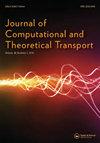Reviewing the Computational Performance of Structured and Unstructured Grid Deterministic SN Transport Sweeps on Many-Core Architectures
IF 1.1
4区 工程技术
Q3 MATHEMATICS, APPLIED
Journal of Computational and Theoretical Transport
Pub Date : 2020-04-15
DOI:10.1080/23324309.2020.1775096
引用次数: 2
Abstract
Abstract In recent years the computer processors underpinning the large, distributed, workhorse computers used to solve the Boltzmann transport equation have become ever more parallel and diverse. Traditional CPU architectures have increased in core count, reduced in clock speed and gained a deep memory hierarchy. Multiple processor vendors offer a collectively diverse range of both CPUs and GPUs, with the architectures used in the fastest machines in the world ever growing in diversity of many-core architectures. Going forward, the landscape of processor technologies will require our codes to function well across multiple architectures. This ever increasing range of architectures represents a unique challenge for solving the Boltzmann equation using deterministic methods in particular, and so it is important to characterize the performance of those key algorithms across the processor spectrum. The solution of the transport equation is computationally expensive, and so we require well optimized and highly parallel solver implementations in order to solve interesting problems quickly. In this work we explore the performance profiles of deterministic SN transport sweeps for both 3D structured (Cartesian) and unstructured (hexahedral) meshes. The study focuses on the characteristics of computational performance which are responsible for the actual performance of a transport solver.回顾结构化和非结构化网格确定性SN传输在多核心架构上的计算性能
摘要近年来,支撑用于求解玻尔兹曼输运方程的大型分布式主力计算机的计算机处理器变得越来越并行和多样化。传统的CPU架构增加了内核数量,降低了时钟速度,并获得了深度内存层次。多处理器供应商提供各种各样的CPU和GPU,世界上速度最快的机器中使用的架构在许多核心架构的多样性中不断增长。展望未来,处理器技术的前景将要求我们的代码能够在多个体系结构中正常运行。这种不断增加的体系结构范围代表了使用确定性方法求解玻尔兹曼方程的独特挑战,因此在整个处理器范围内表征这些关键算法的性能是很重要的。传输方程的求解在计算上是昂贵的,因此我们需要优化良好且高度并行的求解器实现,以便快速解决感兴趣的问题。在这项工作中,我们探索了三维结构化(笛卡尔)和非结构化(六面体)网格的确定SN传输扫描的性能曲线。这项研究的重点是计算性能的特征,这些特征对传输解算器的实际性能负责。
本文章由计算机程序翻译,如有差异,请以英文原文为准。
求助全文
约1分钟内获得全文
求助全文
来源期刊

Journal of Computational and Theoretical Transport
Mathematics-Mathematical Physics
CiteScore
1.30
自引率
0.00%
发文量
15
期刊介绍:
Emphasizing computational methods and theoretical studies, this unique journal invites articles on neutral-particle transport, kinetic theory, radiative transfer, charged-particle transport, and macroscopic transport phenomena. In addition, the journal encourages articles on uncertainty quantification related to these fields. Offering a range of information and research methodologies unavailable elsewhere, Journal of Computational and Theoretical Transport brings together closely related mathematical concepts and techniques to encourage a productive, interdisciplinary exchange of ideas.
 求助内容:
求助内容: 应助结果提醒方式:
应助结果提醒方式:


